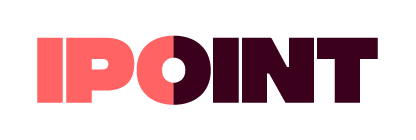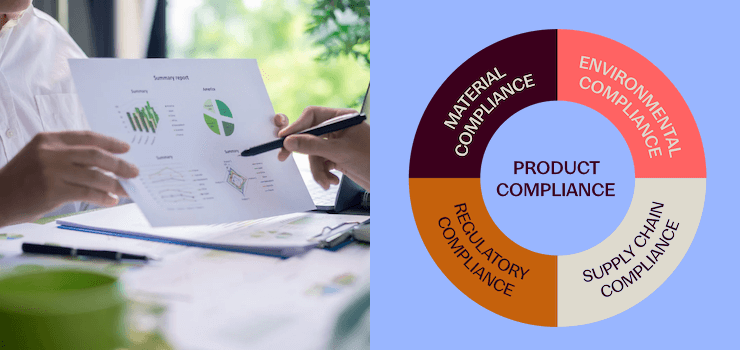A single screw coated with a restricted substance can trigger penalties across 30 countries – that’s today’s reality for manufacturers. Since 2007 the Registration, Evaluation, Authorisation and Restriction of Chemicals (REACH) regulation has been the EU’s flagship chemicals law, forcing every actor – from raw-material suppliers to OEMs – to document and disclose the substances they place on the market.
Beyond Registration and Evaluation dossiers, companies must track three living lists: Authorisation, Restriction, and the Candidate List of Substances of Very High Concern (SVHCs), which now drives mandatory Substances of Concern In Products (SCIP) reporting.
This article unpacks the framework, highlights pain points that trip up compliance teams, and shows how digital product-compliance platforms can turn regulatory pressure into competitive advantage.
Table of Contents
Origins and Purpose of the REACH Regulation
Before 2007, EU chemicals law was a patchwork of directives – complex, inconsistent, and slow to flag new risks. Policymakers wanted one coherent rule-set that closed loopholes and kept pace with innovation.
The result was Regulation (EC) No 1907/2006, better known as REACH. Its twin goals are clear: protect human health and the environment, and safeguard the internal market, so compliant companies can trade freely across Europe.
REACH flips the burden of proof. Industry must generate data, register substances, and show they are safe for intended uses. This “no data – no market” principle underpins every part of REACH compliance.
Four legal pillars structure the law: Registration, Evaluation, Authorisation, and Restriction. Separately, the European Chemicals Agency (ECHA) maintains a Candidate List of SVHCs – a dynamic roster that can feed the Authorisation List and also triggers SCIP reporting duties under the Waste Framework Directive.
Who Must Comply with the REACH Regulation?
REACH EU obligations extend well beyond the chemical sector. Any company that brings substances, mixtures, or articles onto the European market can fall within scope.
- EU manufacturers and importers: They must register every substance at or above 1 t per year and keep continuous REACH compliance.
- Downstream users and distributors: Even without registering themselves, they must pass safe-use data through the supply chain and avoid restricted applications.
- Non-EU producers: To maintain market access, they appoint an Only Representative who mirrors all registration and reporting duties.
- Companies handling SVHCs: If a product contains a Candidate-List substance above 0.1 % w/w (weight-by-weight), a SCIP database submission becomes mandatory.
Master Product Compliance Across REACH,
RoHS & More
Discover how the iPoint Product Compliance Software unifies all major regulations in a single, audit-ready platform – reducing risk and accelerating market access.
Core Requirements of the REACH Regulation
The framework is built on four legal pillars plus a dynamic Candidate List that links to SCIP duties and future restrictions.
Registration
Manufacturers and importers that handle a substance at ≥ 1 t per year must register it with the European Chemicals Agency (ECHA) before placing it on the EU market. Dossiers cover substance identity, hazard data, intended uses, and risk management measures. The guiding rule remains: no data, no market.
Evaluation
ECHA and Member States review registration dossiers and testing proposals to verify data quality and assess risk. Outcomes can include requests for additional information and refined exposure scenarios.
Authorisation List (Annex XIV)
Certain high-risk substances require authorization for each specific use. Approvals are time bound and linked to sunset dates. Early planning helps avoid supply disruptions and costly redesign.
Restriction List (Annex XVII)
Restrictions impose EU-wide bans or conditions on manufacture, use, or placing on the market. They can apply to substances on their own, in mixtures, or in articles.
Candidate List and SCIP Duty
The Candidate List contains Substances of Very High Concern (SVHCs) under consideration for future action. A listing does not equal authorisation or restriction, but it triggers communication to customers and, above 0.1 % w/w (weight by weight) in articles, mandatory Substances of Concern in Products (SCIP) reporting under the Waste Framework Directive. Since 5 January 2021, SCIP reporting has been a legal requirement for all companies placing such articles on the EU market. Monitoring updates, typically twice per year, is essential.
Challenges and Opportunities Under REACH
Even seasoned product-compliance teams face a mix of hurdles and hidden upsides.
- Data depth: Suppliers must disclose full substance identities, not just CAS numbers (unique identifiers from the Chemical Abstracts Service). Missing data stalls registration and accurate REACH reporting.
- Dynamic lists: ECHA adds SVHCs twice a year. Keeping bills of materials aligned with the Candidate, Authorisation, and Restriction Lists can drain resources.
- Regulatory overlap: REACH interacts with the Restriction of Hazardous Substances (RoHS) Directive, the Persistent Organic Pollutants (POP) Regulation, and the EU Waste Framework Directive. A single substance ban can ripple across multiple markets.
- Opportunity – safer design: Early substance mapping steers R&D toward lower-risk alternatives, shortening time to market.
- Opportunity – brand trust: Transparent chemicals disclosure positions companies as responsible partners for customers and investors.
Digital Support: Streamlining REACH Compliance with IPOINT

Spreadsheets do not scale for REACH. Our REACH Compliance Software turns supplier and product data into audit-ready evidence.
- Single Source of Substance Truth: One central database links parts, suppliers, and finished products to current REACH lists. Updates are screened across the bill of materials so risks appear early.
- Supplier Engagement at Scale: Configurable questionnaires collect the required data from each supplier. Reminders and validation increase response rates and deliver complete, consistent documentation.
- Automated SVHC and SCIP Reporting: The platform identifies Candidate List substances in articles and checks the 0.1% w/w threshold. It generates SCIP dossiers and supports Article 33 communication.
- Dashboards and Alerts: Role based views highlight substances, suppliers, and SKUs at risk. Early signals support redesign or substitution in time.
- Integration and Security: The solution connects with PLM and ERP systems and supports enterprise security standards. Data remains consistent and auditable across teams.
In the end, the REACH regulation is as much a driver of product innovation as it is a legal obligation. Companies that invest in systematic data and digital workflows will meet today’s rules and be ready for the next update that lands on the Candidate List.
See IPOINT Compliance in action. Book a demo today.
Frequently Asked Questions
How do the Candidate, Authorisation, and Restriction lists differ?
The Candidate List is a live roster of SVHCs that triggers Article 33 notifications and, above 0.1 % w/w, SCIP submissions. The Authorisation List (Annex XIV) sets sunset dates; companies need explicit approval to keep using listed substances. The Restriction List (Annex XVII) imposes outright bans or use limits that apply immediately across the EU.
When must a substance be registered with ECHA?
Any EU manufacturer or importer that handles one tonne or more per year must submit a registration dossier before placing the substance on the market. The file has to cover identity, volume band, hazard data, exposure scenarios, and risk management measures. Missing data means the product cannot legally be sold, reflecting REACH’s principle of “no data, no market.”
When is SCIP reporting required?
You must file a SCIP dossier for any article or complex object that contains a Candidate-List SVHC above 0.1 % w/w. The submission includes article identifiers, material category, substance name, concentration range, and safe-use instructions. Digital compliance platforms can map bills of materials to the current list and send dossiers directly to ECHA.
Do REACH obligations apply to suppliers outside Europe?
Yes. Non-EU manufacturers must appoint an Only Representative or rely on an EU customer who takes over registration and list monitoring. The representative mirrors every EU duty, ensuring products clear customs and remain on the market. Without this arrangement, shipments risk border rejection and costly supply-chain disruption.






.png)
